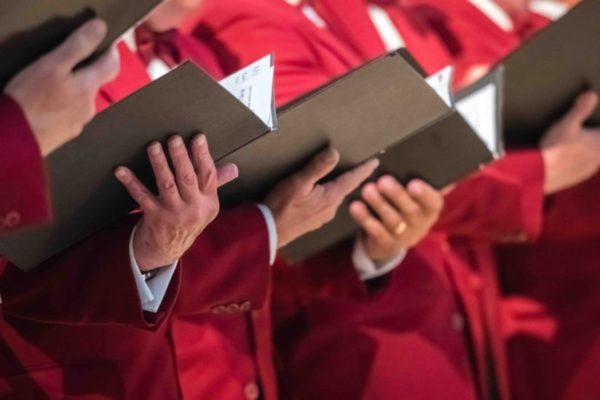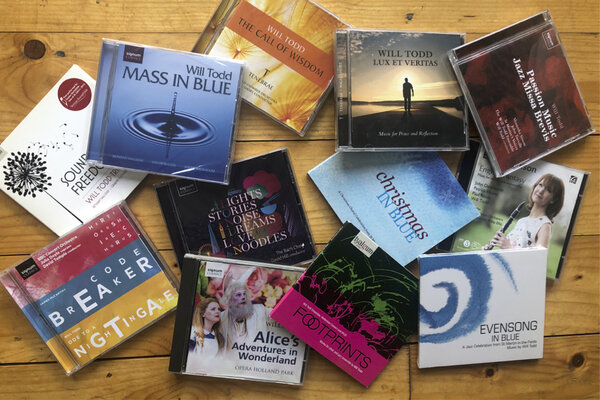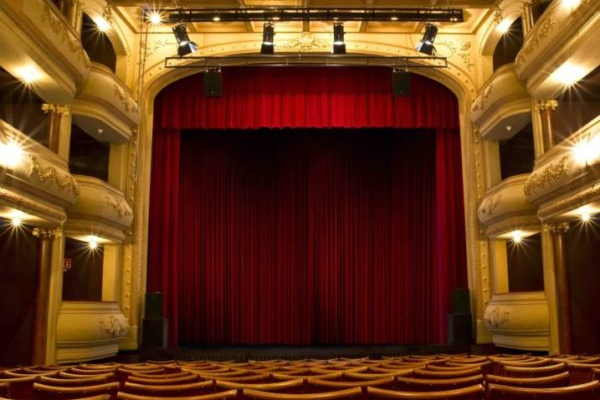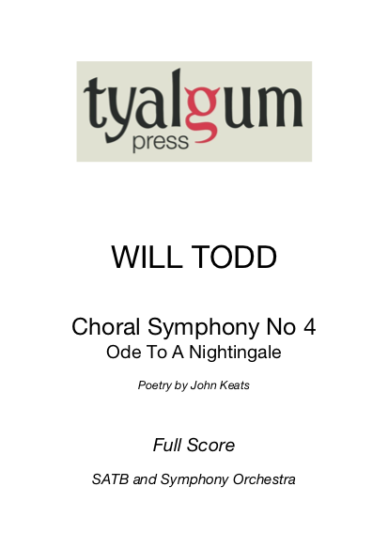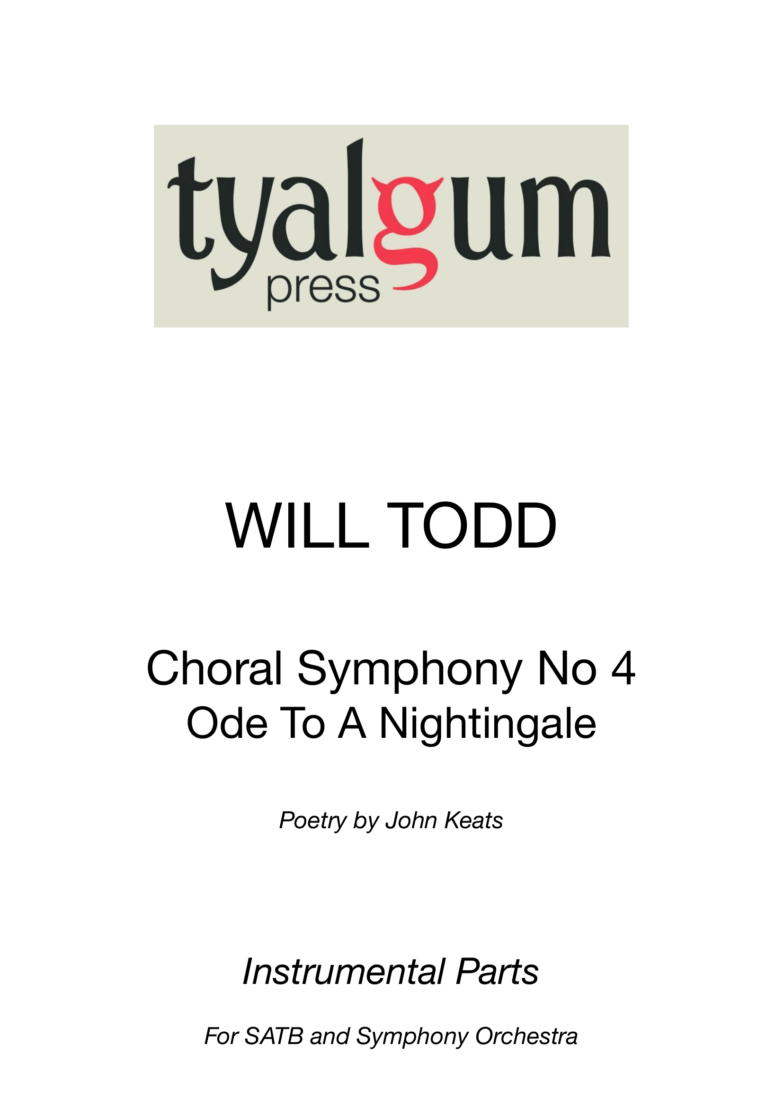Code Breaker by James McCarthy & Ode To A Nightingale by Will Todd
Price range: £0.00 through £12.00
Code Breaker by James McCarthy
Ode To A Nightingale by Will Todd
Hertfordshire Chorus
BBC Concert Orchestra
Julia Doyle Soprano
David Temple Conductor
The two works presented here were both commissioned by Hertfordshire Chorus as part of its long-standing commitment to broadening the repertoire. James McCarthy’s ‘Codebreaker’ takes as its subject the life and death of Alan Turing, while Will Todd takes up the challenges posed by Keats’s ‘Ode to a Nightingale’. Complete with a nightingale.
"The BBC Concert Orchestra offer superb support to both composers and the engineering is up to Signum’s customary excellence. This important release should be in every keen choral singer’s Christmas stocking" Gramophone
"Splendidly recorded and performed… I give a thorough recommendation to this issue" Music Web International
"For me, this is undoubtedly the choral album of the year " The High Arts
Tracking Listing
CD 1: Code Breaker by James McCarthy
- Opening
- Wondrous Light
- Gordon Brown's Apology
- Song of Songs
- Deep is the Night
- Enough
- I Shall Meet Him Again
- Outbreak of War
- At Sea
- De Profundis
- A Mother's Lament
- If Death is Kind
CD 2: Ode to a Nightingale by Will Todd
- Introduction
- My Heart Aches
- O for a Draught of Vintage
- Fade Far Away
- Away! Away!
- I Cannot See
- Darkling I Listen
- Thou Wast Not Born for Death
- Forlorn!
Ode to a Nightingale was commissioned by Hertfordshire Chorus, with generous support from Rod Jones, a patron of the choir for many years. It was first performed on 11 May 2011 at the Barbican Hall, London. It is dedicated, in the words of Rod Jones ‘to Hertfordshire Chorus, to my wife, Rachel, a chorister for 50 years in 2011, and to all who appreciate wonderful choral music and the very best of English poetry.’
Composer’s introduction
This setting of Ode to Nightingale is the subject of my 4th choral symphony. These symphonic works have been spaced throughout my writing career and are linked by the motivic/thematic way in which they are constructed. Midwinter (1992) is characterised by a single 12-note cell which permeates the entire structure of the work, and in The Burning Road (1996) a similar approach is used, where the chromatic motif of the opening movement becomes the allargando melody of the passionate final ‘song of the march’ (movement 4). In Gala and Gloria (2004) there is, again a series of motifs which underpin the complete structure, and in the final soundscape we hear a collision of these themes from different performing groups placed around the space (including Cathedral bells!). There is a 5th choral symphony, which is a setting of Dylan Thomas’s Rage against the dying of the light, commissioned by Crouch End Festival Chorus in 2014. It is interesting to note that David Temple has commissioned three of these choral symphonies (Nos 2, 4 and 5) and that he was initially interested in my music when he first heard No 1. I am truly grateful for his part in developing my expressive language in this series of works.
For an artist, receiving a commission is the most exciting and uplifting thing. It’s an endorsement of one’s craft and it never stops being an honour to be asked to create new music for people. On this occasion it was the wonderful Hertfordshire Chorus asking me to set Keats’ Ode to a Nightingale (as suggested by Rod Jones, a Hertfordshire Chorus Patron)—suddenly the happy commissioning glow feels slightly less warm … Ode to a Nightingale? One of the most famous and well known poems in English? The one that everyone studied at school? The one that everyone loves and cherishes? I’m humbled before I even put a single scribble on my manuscript book (yes paper, from which I’ll later construct a computer-notated version)! This is a poem which pulsates with romantic imagery and emotion—death, fantasy, love, hope and despair all embraced in rich and beautiful language. Keats’ short but emotion-filled life pours off the page in these eight stanzas, and the effect of reading the poem leaves you with a sense of being on an amazing and emotive journey through fantastical places and ideas, coming finally to rest on the realisation of mortality. It’s like a symphony in words.
Immediately one notices challenges in terms of integrating music. The poem is in some ways quite repetitive—not in the individual language but in the repetition of sentiment—and the danger is that if you make the music move at the emotional pace of the language we will end up with a rather frenetic canvas that doesn’t suit the overall mood of the poem. So I opt for a symphonic approach in the music, using themes that build organically and can be repeated and returned to. The final result is a single movement ‘choral symphony’ which I hope in some way reflects the incredible outpouring of Keats’ poem.
Like the poem the music has different moods. There are soft harmonies and more urgent ones. Quiet reflective moments and massive climactic gestures. The solo violin weaves in and out of the choral textures like a muse, leading the music forward towards what feels like the central moment of the poem ‘now more than ever seems it rich to die’. There are big orchestral colours and very thin and eerie ones. Like the poem I have sought to use a rich harmonic and textural language.
Codebreaker was commissioned by Hertfordshire Chorus following discussions between David Temple and James McCarthy. The idea of writing about Alan Turing came from Janet Cameron and it was her generous support that provided the funding. The work is dedicated to her parents Tom and Elsie Cameron. It was first performed on 26 April 2014 at the Barbican Hall, London.
Composer’s introduction
Writing a music drama about Alan Turing was a far more complex and dizzying undertaking than I had first imagined it would be. In a way, the story of Turing’s life is a composer’s gift: an eventful and ultimately tragic existence that had vast repercussions, the reverberations of which we are still feeling today. And yet it was a life shrouded in mystery. Turing left behind surprisingly few clues regarding what he felt about, well, anything at all. He was a private man dedicated to his passion for scientific and mathematical enquiry. But he was also a national hero whose genius saved millions of lives during the Second World War and who died as a result—at least in part—of persecution from the country he was instrumental in saving from oblivion. His is the clearest claim to the title ‘inventor of the computer’, thereby allowing me to type this on a train as it wheezes its way through the Surrey countryside (a landscape, incidentally, that Turing would have known well in his pastime as a distance runner of near-Olympic standing). There can have been few people in history who achieved so much of profound consequence for humanity in so little time.
Codebreaker isn’t a biography, complete with copious footnotes, or an exhaustive encyclopaedia entry. There are many aspects of Turing’s life that I would dearly have loved to include, but too broad a narrative arc, too meandering a musical journey, would have lessened the dramatic impact of the whole. From the outset, I wanted Codebreaker to be a portrait of a living, breathing human being and not the musical equivalent of a marble monument to a Great Hero. So I had to find the man behind the myth-making. And I found him in two ways. Firstly, through his mother’s biography (which, remarkably, Sara Turing wrote in spite of the fact that she had no knowledge of her son’s contribution to the war effort), and secondly, through the letters that Turing composed to the mother of Christopher Morcom. Indeed, Morcom was key to everything.
Turing met Morcom at school and fell deeply in love with him. It is doubtful that Morcom was aware of Turing’s true feelings; their relationship was based on a passion for science and nature; they would map the stars together. Morcom was a precociously gifted young man and showed much more potential for further academic success than Turing did at the time. Sadly, Morcom died very suddenly of bovine tuberculosis at the age of 18. And we would probably know nothing of the deep pain and inspiration that Turing took from this tragedy were it not for the letters of condolence that he wrote to Morcom’s mother (‘I shall miss his face so, and the way he used to smile at me sideways.’) Falling in love with Morcom changed Turing’s life. It would be an over-simplification to say that Turing owed everything to that single event, but I believe that the desire to fulfil Morcom’s potential for him and the later investigations into whether machines could think flow from this pivotal moment.
In Codebreaker I have focused on three key moments in Turing’s life, namely: falling in love with Morcom, the war, and his final hours. The piece begins with a prologue. The very first words (‘We shall be happy’) come from the final line of the piece, making Codebreaker circular. There follow a couple of lines that Turing scrawled on a postcard that I think demonstrate that he had a poetic soul: ‘Hyperboloids of wondrous light / Rolling for aye through space and time’. The prologue concludes with Gordon Brown’s apology on behalf of the British Government from 2009 (predating the more recent Royal Pardon). Brown’s heartfelt apology gives a neat overview of Turing’s life and delineates the narrative arc of the piece to follow.
Introductions over, the chronological narrative of the piece proper begins as Sara Turing leads us into the feelings of rapture and elation that Turing would have felt falling in love for the first time, and how that is all unravelled by Morcom’s sudden and tragic death. We then leap forwards in time by a decade or so to the outbreak of the Second World War. Although the war was a deeply disturbing time for Turing, as it was for everyone, it is also true that at Bletchley Park he was respected, revered and accepted in a way which was quite exceptional in his life. The social life at Bletchley was vibrant and colourful, though the shadow of war hung over everything, so this music is shot through with the spirit of brilliant young minds working together to one end.
At Bletchley, Turing was given responsibility for cracking the naval Enigma codes, famously the most difficult Enigma codes to decrypt at the time, and he did so by inventing a machine called the Bombe which greatly speeded up the process of decryption. It was one of the great intellectual feats of the 20th century. Every day brought a new code to crack which would unlock all of the German communications for the following 24 hours, so every morning there was feverish work to be done decrypting that day’s code, all the while everyone was aware that with every minute that passed thousands of sailors’ lives were at risk from U-boat attacks. At the time, war must have seemed unstoppable, the marching of jackboots irresistible. Yet at the same time Turing would have known this: that the natural world, the world of science, couldn’t care less about our wars, our conflicts. Nature will carry on as it always has long after we have all left this world in peace.
We then jump forward in time to 1952, the year in which Turing was arrested for having an affair with a young man. Turing, as a known homosexual who had at one time been privilege to the highest level of security information, was, at least to the British secret services, a security risk. He was, to them, an individual who could potentially be blackmailed by Britain’s Cold War enemies. And so he was hounded, his movements tracked, his friends followed. The sadness is that none of this should come as a particular surprise to us today. Edward Snowden has revealed how the US and UK governments are currently monitoring every aspect of our online lives. And it is a startling irony that our computers, Turing’s invention, are allowing them to do this. So, in 1952, when Turing was the victim of a minor robbery he reported it to the police. During the investigation it came to light that Turing had been having an affair with a young man, then illegal, and so after a brief trial he was offered a choice of a prison sentence or chemical castration, Turing chose the latter. It is still shocking to realise how recently in British history this all happened.
In the 1930s, Turing had been captivated by Disney’s groundbreaking animation Snow White and he often repeated the following line: ‘Dip the apple in the brew, let the sleeping death seep through.’ In 1954, two years after his arrest and chemical castration, Turing dipped an apple in cyanide and took a bite. He was just 41 when he died. The final moments of Turing’s torment find their voice in Oscar Wilde’s De profundis (written to Lord Alfred Douglas while Wilde was imprisoned in Reading Gaol). Having bitten the apple, Turing slips into unconsciousness. Approaching death feels very much like falling asleep, or entering a forest from which he will never be able to escape. Later, reeling from her son’s death, Sara Turing sings Robert Burns’s A mother’s lament for the death of her son.
And that is where the story ends. Or, at least, that is where it should end. But I just couldn’t bring myself to leave Turing in the dark, frightening and lonely place he truly ended up. He deserved so much better. So here it is: I imagine that, in his final moments, he would have wished to be reunited with Morcom, as he had wished throughout his adult life. Perhaps the last image that flooded Turing’s consciousness was that of Christopher Morcom’s smiling face. So that is where we leave him, standing side-by-side with Morcom under the wide starlight for all eternity. ‘We shall be happy, for the dead are free.’
Additional information
| Details | Code Breaker by James McCarthy Release Date: 06/10/2017 |
|---|
